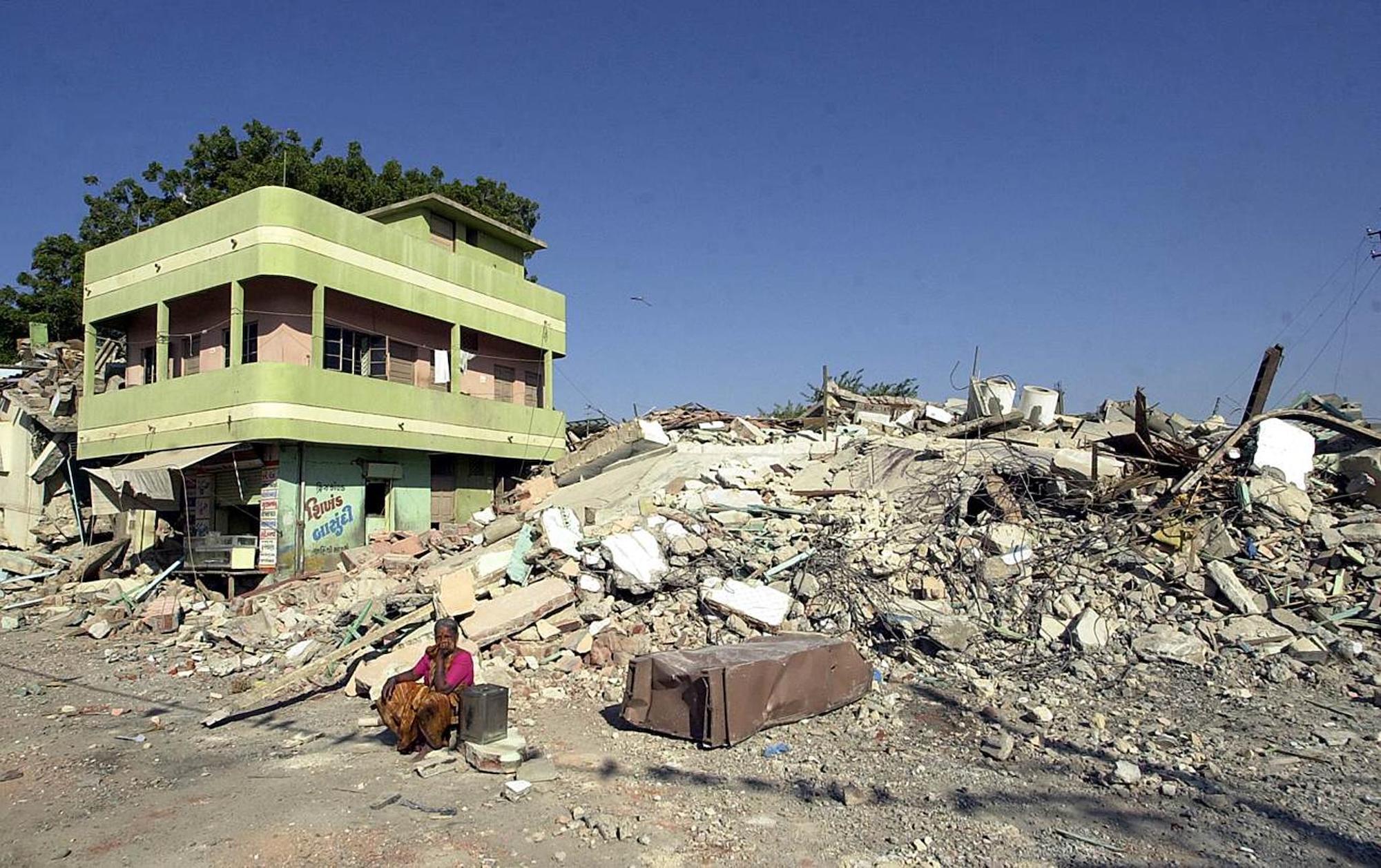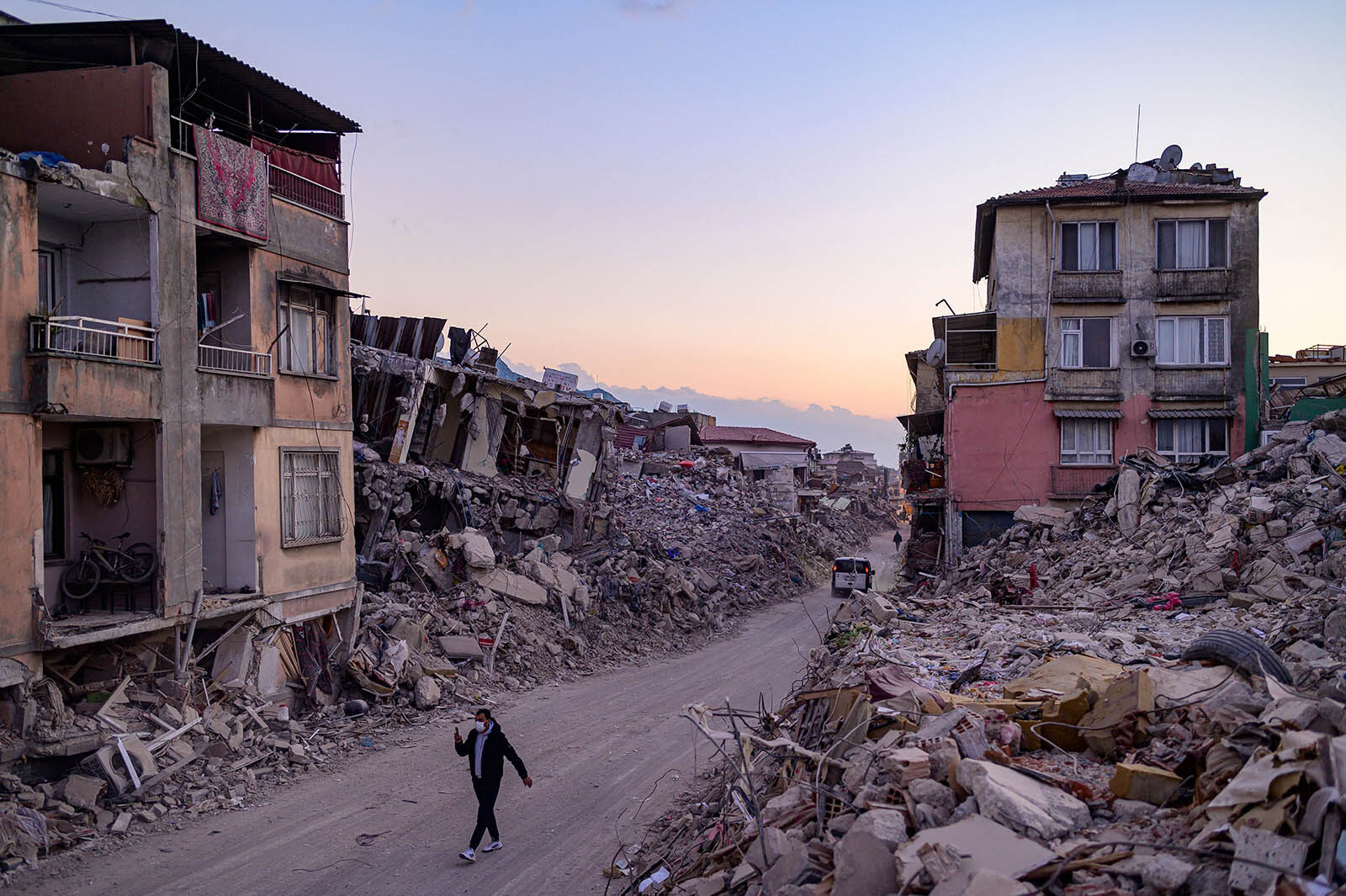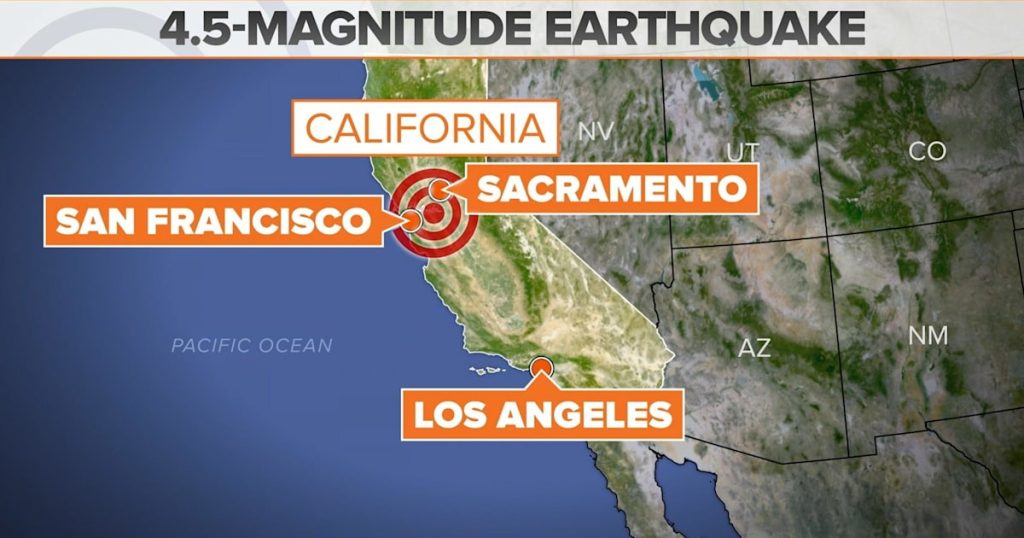Residents across the San Francisco Bay Area were jolted awake early Monday by a moderate earthquake that was felt widely across the region. The 4.3 magnitude quake hit shortly before 3 a.m., just east-southeast of Berkeley, according to the U.S. Geological Survey (USGS). While no injuries or major damage were reported, some businesses experienced broken windows and merchandise falling from shelves. This event has sparked significant interest among locals and national media, making it one of the top US news stories today.
What Happened?
The earthquake occurred at approximately 2:50 a.m. local time, with its epicenter located about 13 miles (21 kilometers) south of Berkeley. According to the USGS, the tremor was felt as far away as Salinas, roughly 100 miles (161 kilometers) to the south. Despite its moderate strength, the quake caused widespread concern due to its timing and location.
Residents described the experience as sudden and startling. Dave Clark, a news anchor for KTVU-TV, shared his account on social media, stating, “Things were shaking in our newsroom. It caught everyone off guard.” This sentiment was echoed by many others who reported feeling the ground shake while still asleep.
Impact on Daily Life

The earthquake disrupted daily routines in several ways. The Bay Area Rapid Transit (BART) system experienced delays as crews conducted safety inspections of the tracks. BART officials confirmed that trains returned to regular service around midday, but the incident caused inconvenience for commuters.
Additionally, some businesses reported minor damage, including broken windows and items falling from shelves. However, no major structural issues were reported, and emergency services remained on high alert throughout the morning.
Expert Reactions and Historical Context

Experts from the National Weather Service and USGS provided insights into the event. Brayden Murdock of the National Weather Service in Monterey noted that while the earthquake was noticeable, it did not cause significant damage. He added, “As far as earthquakes go, this is kind of the ones where people feel them, but there’s not a whole lot of impacts to them.”
According to the USGS, the last earthquake of a similar magnitude near Berkeley was a 4.4-magnitude quake that struck on January 4, 2018. This suggests that the area is seismically active, though not prone to large-scale disasters.
Understanding Earthquakes: A Broader Perspective

While the recent event was relatively minor, it highlights the ongoing risk of seismic activity in California. The state sits along the San Andreas Fault, a major tectonic boundary that has historically been responsible for numerous earthquakes. The USGS maintains extensive data on global and regional seismic events, offering valuable insights into patterns and trends.
According to the USGS, there are about 450,000 earthquakes worldwide each year, with most being too small to be felt. However, larger quakes can have significant consequences. For example, earthquakes above magnitude 7 often result in extensive damage, even in well-prepared regions like the western United States.
How Often Do Earthquakes Occur?
In the past 24 hours, there were 7 quakes of magnitude 5.0 or above, 41 between 4.0 and 5.0, and 100 between 3.0 and 4.0. Smaller quakes below magnitude 2.0 occur frequently but are often unrecorded due to limited seismic network coverage.
Most earthquakes occur along the margins of the Pacific Ocean, followed by the Alpine-Himalayan mountain belts. These regions are tectonically active due to the collision of tectonic plates, which release energy in the form of seismic waves.
Preparing for Earthquakes

Despite the low likelihood of major damage from a 4.3-magnitude quake, preparedness remains crucial. Experts recommend that residents in earthquake-prone areas take steps such as securing heavy furniture, having an emergency kit, and knowing how to respond during a tremor.
The USGS also emphasizes the importance of early warning systems and public education. In California, the ShakeAlert system provides critical seconds of warning before strong shaking begins, allowing people to take protective actions.
Conclusion
The recent earthquake in San Francisco serves as a reminder of the region’s seismic vulnerability. While the event was minor, it underscores the need for continued vigilance and preparedness. As one of the top US news stories today, it has drawn attention to the importance of understanding and mitigating earthquake risks.
For more information on current seismic activity, the USGS website and the AllQuakes app provide real-time data and visualizations. Residents and visitors alike should stay informed and take necessary precautions to ensure safety in the face of natural disasters.
Author: Alex Carter
Title/Role: Senior Environmental Correspondent
Credentials: With over a decade of experience covering environmental and geological issues, Alex has reported on natural disasters, climate change, and sustainability efforts across the United States.
Profile Link: LinkedIn Profile
Sources:
– U.S. Geological Survey (USGS)
– California Earthquake Map
– AllQuakes Website
Internal Links:
– Top US News Today
– Trending News USA
– Current Events in USA
Call to Action:
Stay updated with the latest news and developments. Explore today’s headlines to stay informed about what’s happening in the United States and beyond.











More Stories
US Trending News: Youngboy Concert in Birmingham: What to Know Before You Go
Winter 2025-26 U.S. Weather Forecast: What to Expect Across the Country
Whitefish Bay Trick or Treat 2025: A Complete Guide for Residents and Visitors